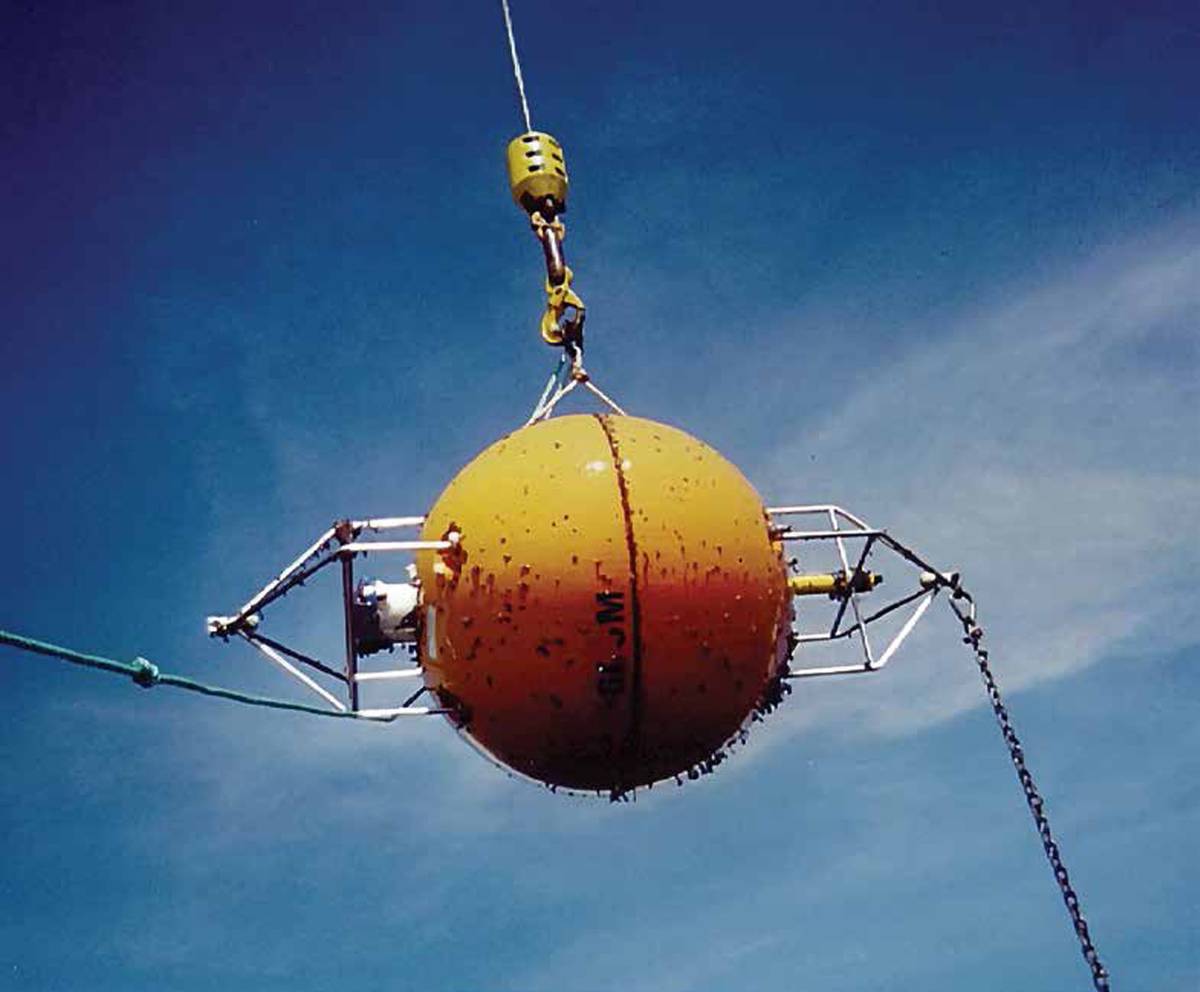Teledyne RD Instruments Measure Ocean Waves from a Subsurface Mooring in Deep Water
Teledyne RD, Instruments’ Acoustic Doppler Current Profilers (ADCP) meet and exceed various challenges in measuring ocean waves from subsurface moorings deployed in deep water. Multiple deep-water projects involve ocean current and tide measurements to support various applications, including deep-water oil and gas exploration, drilling operations, engineering, and construction. These missions operate at water depths ranging from 100 to 2500 meters and utilize subsurface moorings due to their simplicity, ruggedness, adaptability, and long-term deployment capabilities. Ocean Data Technologies, Inc. has a long history of working with Teledyne RDI ADCPs. They rely on this technology to get high-quality data sets for current profiling. More recently, the need arose to measure ocean waves in several challenging deep-water locations.
Challenges and Objectives
The introduction of measuring ocean waves in deep-water locations posed several challenges, including determining how to measure waves, achieving the necessary resolution and accuracy, and managing the associated costs. The objectives were to find a reliable method for measuring ocean waves, determine the appropriate solution, ensure measurement accuracy, and control costs effectively.
ADCP Waves Array Techniques
To measure ocean waves, three independent wave measurements were employed:
-
1. Measuring orbital velocities at several depth bins near the surface.
-
2. Using echolocation to track the surface from all four ADCP beams.
-
3. Utilizing pressure measurements at the instrument’s depth.
When all three measurements agreed, it indicated reasonable data quality.
-
Product: Teledyne RD Instruments ADCP (Workhorse 300 kHz Waves Array)
-
Application: Waves Measurement
-
Project: Measuring surface waves in deep water
-
Locations: Bass Strait, southern Australia, in 1400 m water depth;
Arafura Sea, off western Papua, in 1410 m water depth;
Gulf of Guinea, west of Lagos Nigeria, in 90 m water depth
Mooring Design Features
The mooring design featured a taut-wire subsurface design with critical components, including a top float, lightweight wire, distributed buoyancy, and an anchor. The design aimed to maximize lift and upward restoring force at the top while minimizing layover in strong currents. It also allowed for the profiling of currents in addition to wave measurements.

Teledyne RDI ADCP Configuration
The ADCP configuration involved dual ADCPs mounted in the top float. The upward-looking ADCP provided small bin sizes (2 meters) for high-resolution surface wave measurements. The downward-looking ADCP used larger bin sizes (8 meters) to profile deeper layers. Both ADCPs were independent – clocks were synchronized during data post-processing. An independent, 3-dimensional inertial motion (IMU) sensor was also used to measure ADCP motions.
We were approached by several companies requesting measurement of ocean waves in deep water areas—depths far exceeding normal limits for ADCP-based wave measurements—and in areas with a significant risk of mooring loss (Nigeria and Indonesia), which preluded use of surface-based waverider buoys. Working with Teledyne engineers and esteemed researchers like Dr. Eugene Terray at the Woods Hole Oceanographic Institution and Tony Schanzle of JAS Research, we were able to develop methods to obtain those data successfully without excessive cost Jon Wood, President and Senior Engineer, Ocean Data Technologies, Inc.
Data Processing and Error Sources
Data processing involved outputting burst data from RDI’s WavesMon software and applying motion corrections from the IMU data. Pressure data were migrated to the surface, velocity data were corrected for clock drift, and height spectra were calculated. Spectra from three independent measurements were compared. Several error sources were identified, including buoy motions, horizontal currents, and low-frequency buoy motions, which affected measurement bias. Efforts were made to identify, quantify, and correct these errors.
Teledyne RDI Solution
-
Promising results were achieved, with directional waves resolved in high-energy and low-energy environments.
-
Consistency of results correlated with meteorological forcing and adjacent observations.
-
Errors were minimized by correcting for ADCP motions with the independent IMU motion data. Design considerations included balancing resolution versus accuracy, using upward and downward-looking ADCPs, maintaining over-damped mooring systems, and considering buoy vane usage for limiting yaw.
Conclusion
Measuring ocean waves from a subsurface mooring in deep water presents challenges and opportunities. Teledyne RDI technology demonstrated that obtaining reliable ocean wave measurements is possible even in extreme conditions with careful design, data processing, and error correction techniques. Design considerations and iterative methods are crucial for reducing errors and improving the accuracy of ocean wave measurements in deep-water, remote regions.